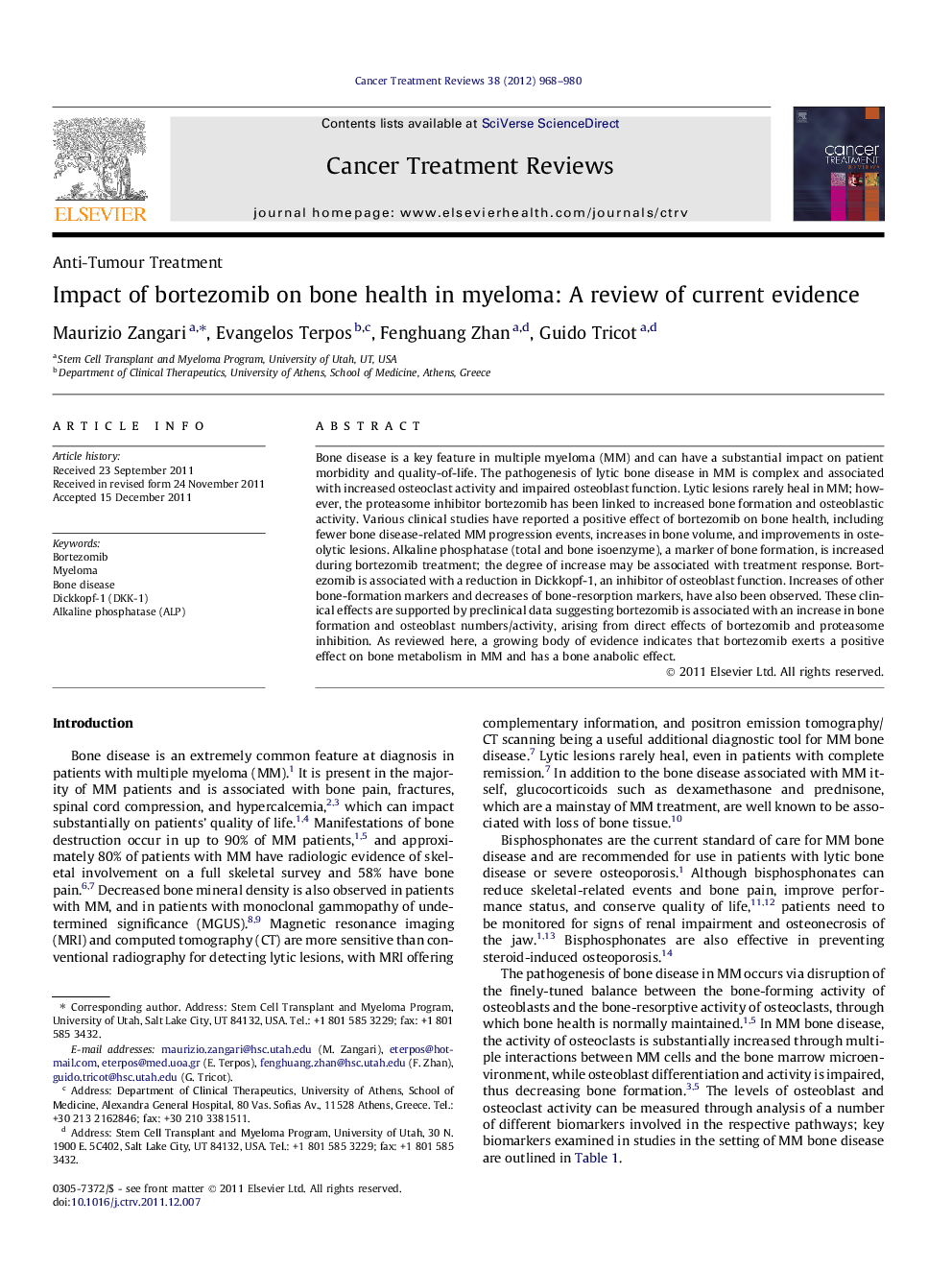| Article ID | Journal | Published Year | Pages | File Type |
|---|---|---|---|---|
| 3979895 | Cancer Treatment Reviews | 2012 | 13 Pages |
Bone disease is a key feature in multiple myeloma (MM) and can have a substantial impact on patient morbidity and quality-of-life. The pathogenesis of lytic bone disease in MM is complex and associated with increased osteoclast activity and impaired osteoblast function. Lytic lesions rarely heal in MM; however, the proteasome inhibitor bortezomib has been linked to increased bone formation and osteoblastic activity. Various clinical studies have reported a positive effect of bortezomib on bone health, including fewer bone disease-related MM progression events, increases in bone volume, and improvements in osteolytic lesions. Alkaline phosphatase (total and bone isoenzyme), a marker of bone formation, is increased during bortezomib treatment; the degree of increase may be associated with treatment response. Bortezomib is associated with a reduction in Dickkopf-1, an inhibitor of osteoblast function. Increases of other bone-formation markers and decreases of bone-resorption markers, have also been observed. These clinical effects are supported by preclinical data suggesting bortezomib is associated with an increase in bone formation and osteoblast numbers/activity, arising from direct effects of bortezomib and proteasome inhibition. As reviewed here, a growing body of evidence indicates that bortezomib exerts a positive effect on bone metabolism in MM and has a bone anabolic effect.
